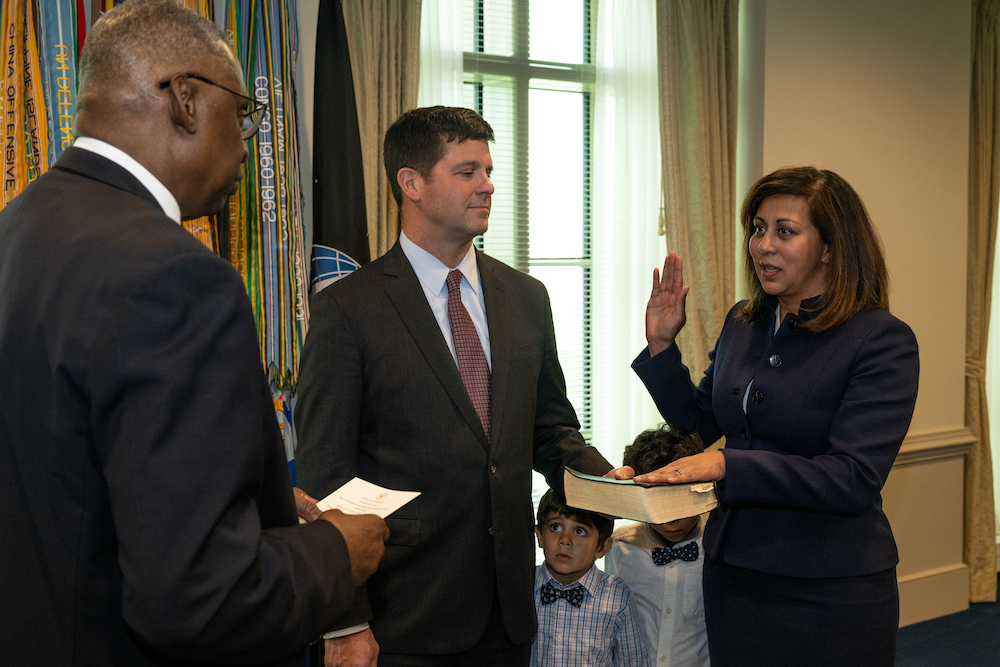Tech Reforms Ahead at VA to Meet COVID-19 Challenges
The agency has accelerated and reinforced various modernization efforts like telehealth, mobile capabilities and self-service tools.

The Department of Veterans Affairs has detailed steps it has made to reconfigure its IT systems for more virtual private networks and telehealth capabilities in response to the COVID-19 pandemic — a move for which CIO James Gfrerer said there was no template.
“There were a number of actions we took to reinforce the enterprise and ensure we were responsive to this ‘black swan’ event,” he said during a keynote address for an AFCEA Bethesda virtual event Thursday. “A black swan event is one in which none of our experience or knowledge really prepared us to address the challenges of the current national emergency.”
Both the U.S. and the world at large haven’t been forced to contend with a pandemic of this scope, and technologists across the federal government had no active experience attempting to reconcile modern IT systems with the strain imposed by social distancing and universal workplace shutdown.
The VA previously detailed how it’s had to adjust its medical supply chain via a centralized approach.
This was a particularly instructive moment for the VA, with COVID-19 acting as a sort of abrupt stress test of the agency’s various remote work and data-sharing capacities.
“[COVID] confirmed our efforts in what we’re doing right, but also exposed areas of weakness in underinvestment,” Gfrerer said.
The VA’s response to this has been swift, with a particularly strong emphasis on augmenting the underlying IT infrastructure that sustains both agency services and remote work.
“We’ve doubled our virtual private network to support remote access … we’ve tripled our telehealth capacity,” he said. “We’re adding about 100,000 mobile devices and 250,000 endpoints in our environment … there’s a lot going on to support a variety of things all the way from contact centers, to telehealth, to continued claims adjudication.”
These rapid developments in remote capacity have increased the number of VA employees who can support agency functions remotely and created a new foundation for providing an expanded roster of telehealth services for veterans seeking care during a time of social distancing.
While Gfrerer acknowledged that “VA is not by definition a telehealth agency,” he also detailed that the agency has been able to support what has amounted to “about a tenfold increase in daily appointments” since the epidemic broke earlier this year. Currently, the VA intakes more patient appointments over telehealth than in person.
“At one point in April, the number of daily on-site appointments were eclipsed by the daily number of telehealth appointments,” he said.
This rapid development in telehealth capacities has led to corresponding reforms in training and business software, with an expedited onboarding process for new employees being matched with the quick adoption of platforms conducive to remote work. This has led to what Gfrerer detailed as the “largest single-day deployment of Microsoft Teams … about 400,000 new employees have been brought onto the platform.”
Beyond the reforms being adopted across the VA workforce, many of these technology and access developments have been focused on sustaining and improving customer service amidst the epidemic — with a particular focus on building atop services that have been launched amid the agency’s ongoing digital modernization push. This has included building out the centralized service portal through the agency’s main website.
“We’re working to enhance and expand what we call ‘self-service tools’ … we have an expansive effort around our VA.gov platform to make it the central hub of vital information for the American veteran,” Gfrerer said.
These self-service tools simultaneously aid veterans seeking help and information, and reduce the demand on VA employees who are currently managing a spike in demand for remote services.
“There has been extreme demand on VHA’s call centers. At some point, you just can’t get ahead of that. So one of the things our digital experience team did … was develop a chatbot with frequently asked questions. Really two purposes — one to relieve the burden at call centers, but also to give veterans the opportunity to self-serve,” Gfrerer said.
As an auxiliary to these developments in customer-facing technology, the VA is also leveraging its recent advances in data sharing and integration to better track the course of the epidemic and its impact on demand across VA clinics — particularly with an eye toward a gradual and responsible reopening process.
“Our corporate data warehouse and business intelligence service line is working diligently with the Veterans Health Administration to develop the National Surveillance Tool and the Access to Care website,” Gfrerer said. “As the VHA is looking to become more ‘back on premise’ and VA medical centers are reopening for on-premise appointments, they’re tracking the capacity to do that.”
Despite the challenges at hand and identified areas of development, the reforms demanded by the COVID-19 crisis could be smoothly integrated with the VA’s modernization push while serving as a basis for tech developments in the future, like telehealth.
“VA was already on that journey ahead of the pandemic, and the pandemic really just accelerated the need for that. 35 to 40% of veterans are already in a rural area, and when you correspond that with a need for telehealth it’s really a non-issue,” he said.
This is a carousel with manually rotating slides. Use Next and Previous buttons to navigate or jump to a slide with the slide dots
-

The CAIOs Leading Responsible AI Development Across Government
Since the White House's AI executive order, federal agencies are in the process of naming chief artificial intelligence officers.
7m read -

How TMF is Helping Agencies Accelerate Tech Modernization
The program launched a new AI pilot to expedite TMF applications as agency leaders urge more to consider applying for funds.
4m read -

Defense Board to Pitch Solutions for Closing Tech Talent Gaps
Defense Innovation Board members cite need to modernize people management the same way government modernizes technology.
4m read -

Energy Researchers Aim For Holistic Approach to AI Issues
A new center at the Oak Ridge National Laboratory is looking at under-researched areas of AI to better understand how to secure it.
2m read




